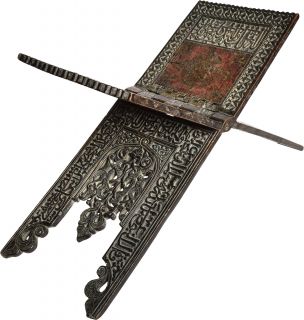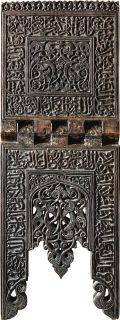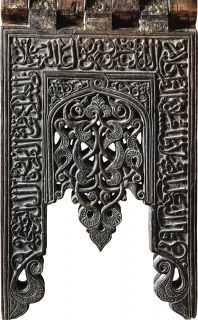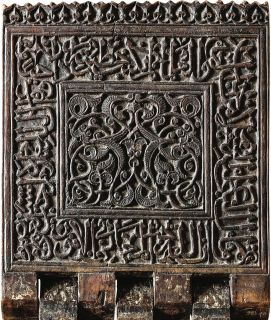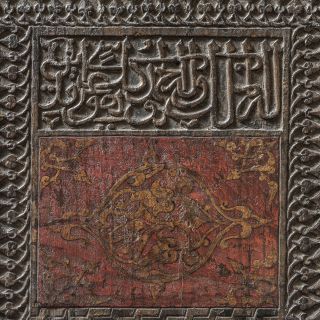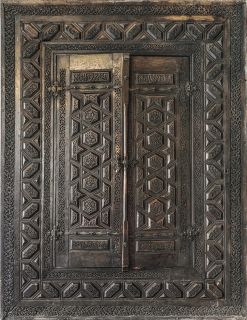Wooden Qur’an Stand
Turkiye13,14th Century
An important example of Seljuk era woodwork, the Qur’an stand was carved out of a single piece of walnut wood. Both wings are arranged and decorated symmetrically. The denticulated tenons for the opening/closing divide the exterior surfaces in two. The upper parts topped with a border of palmette-lotus have a palmette-rumi composition framed with a band of inscription. The lower part has an arched layout surrounded with an inscription border; the palmette-rumi design here is carved in openwork. The feet of the stand terminate in a big rumi. Traces of paint on the outer surfaces of the wings indicate that the entire decoration was gilded, which is something rarely attested on extant works. The lower inner surfaces are framed with a guilloche and the upper ones with a palmette-lotus border. It is inferred that these carvings were also gilded. One-third of the central area is occupied by a one-line inscription. The rest is filled with a sunburst medallion and spandrels of palmette-rumi painted in gold on red background. The inscriptions are hadiths (sayings of the Prophet Muhammad) regarding reading the Qur’an, daily prayers, understanding death, having faith, closing eyes to others’ faults, making charity, and loving scholars and science.

